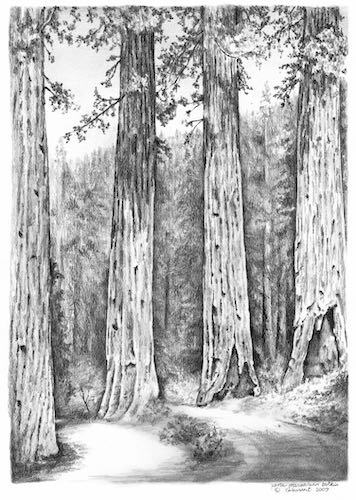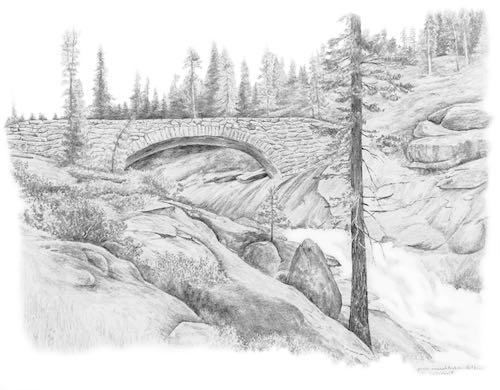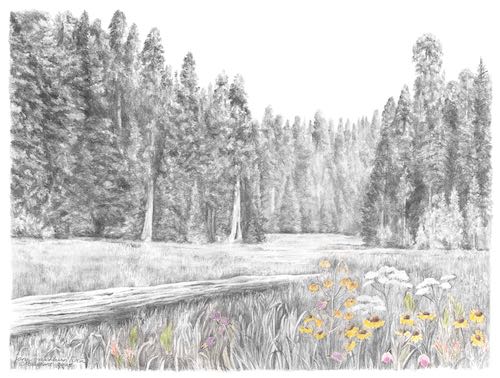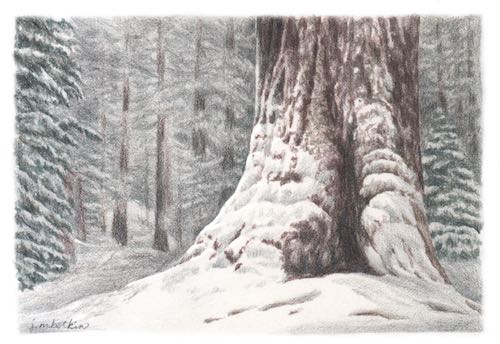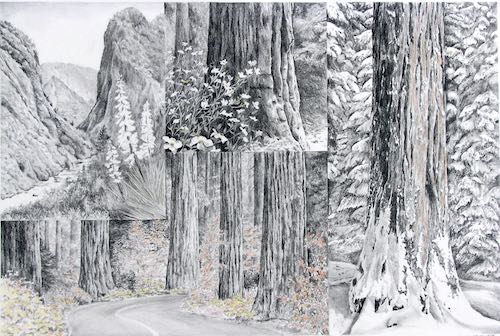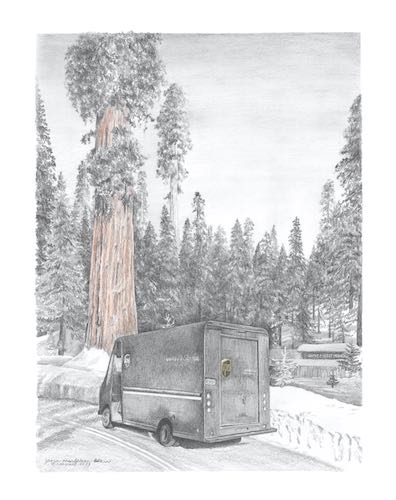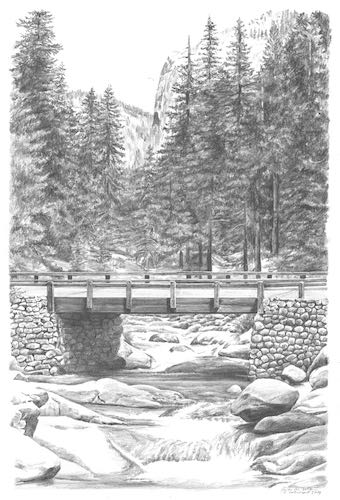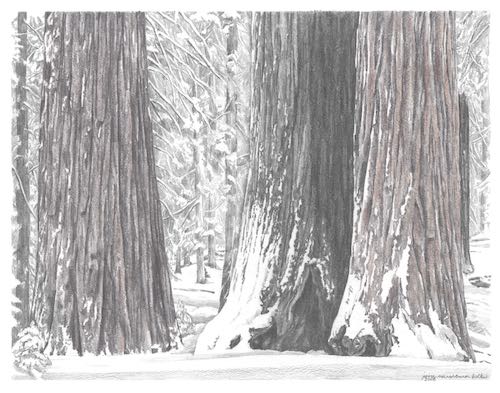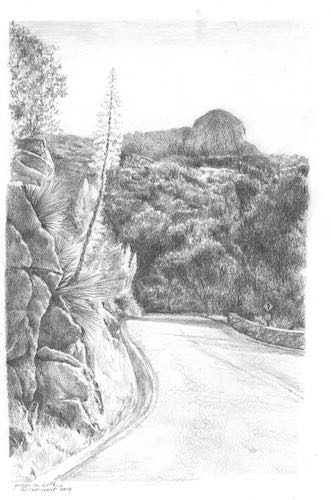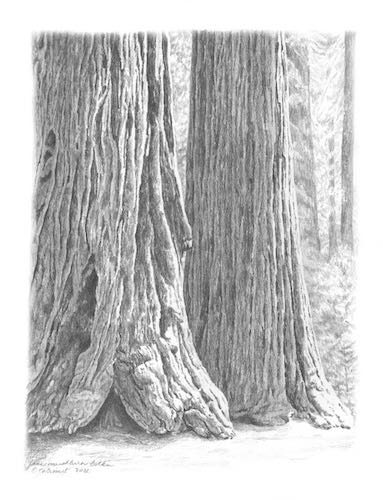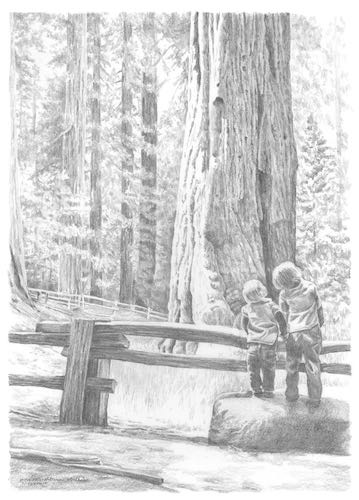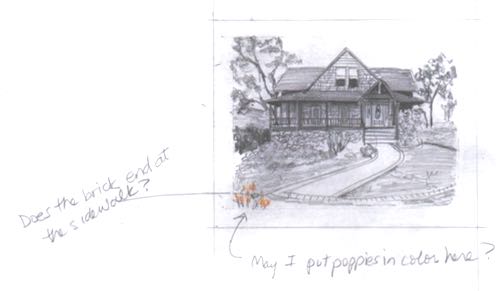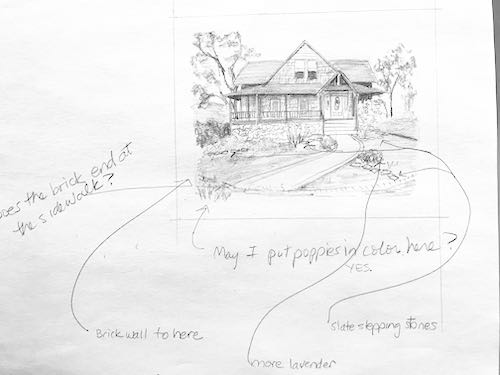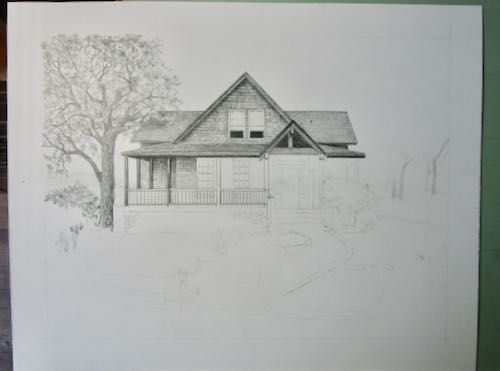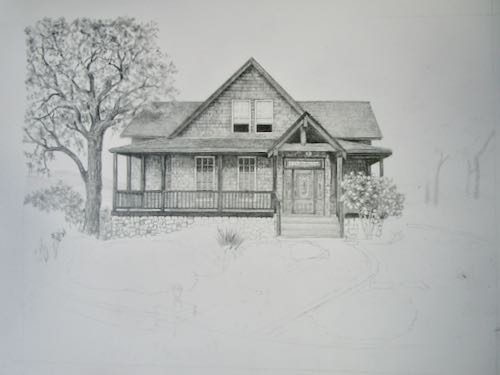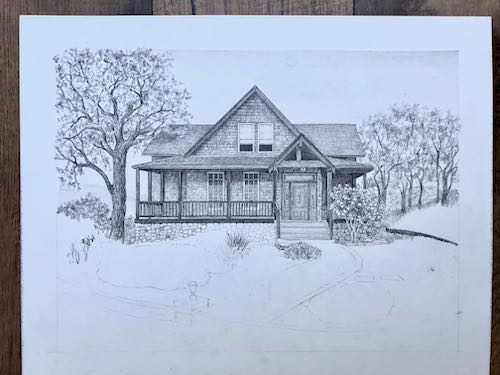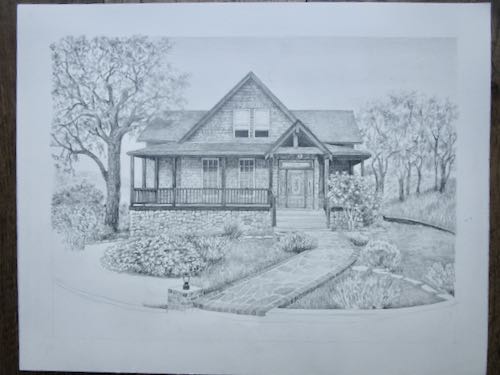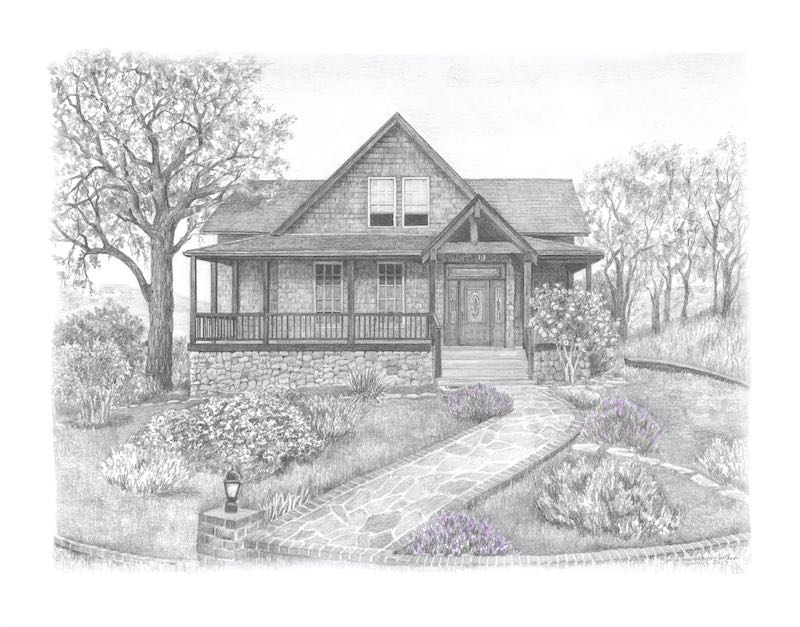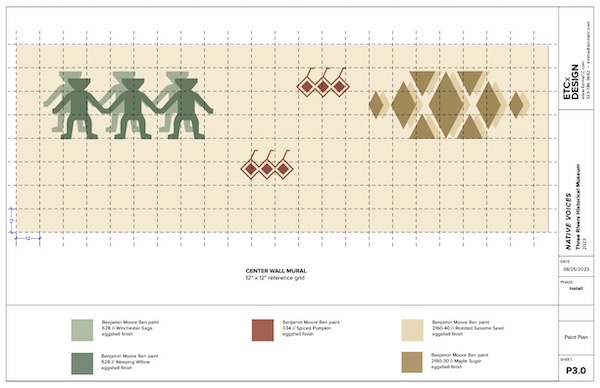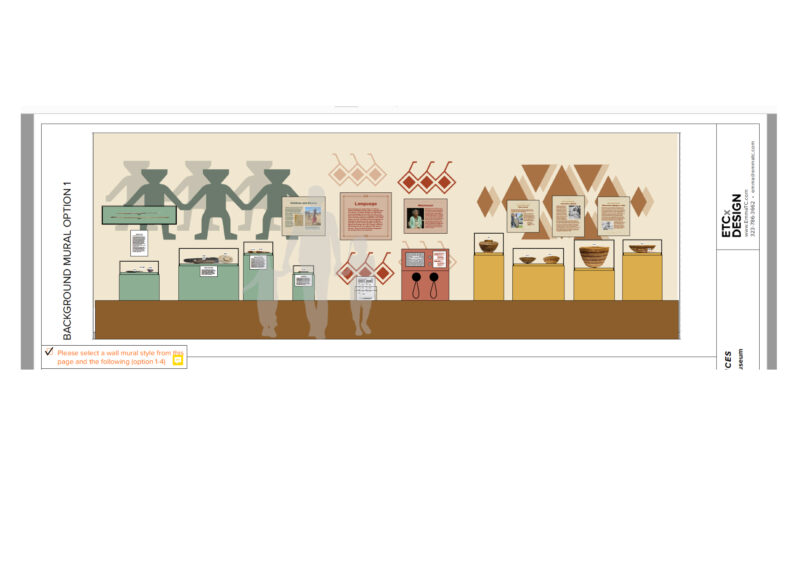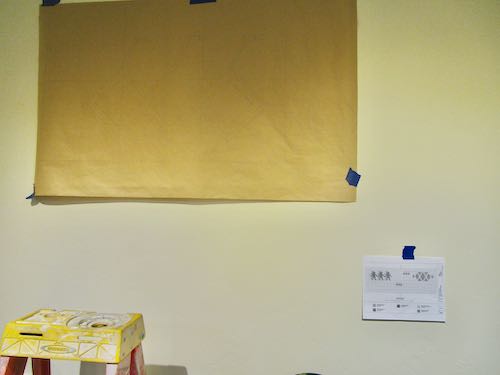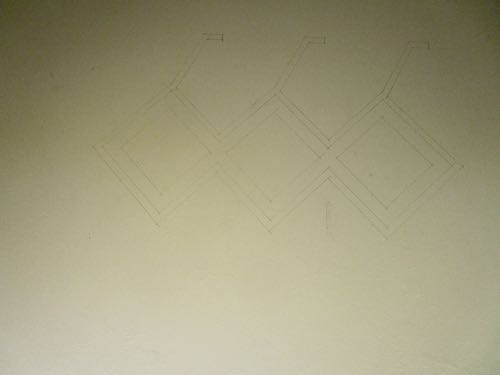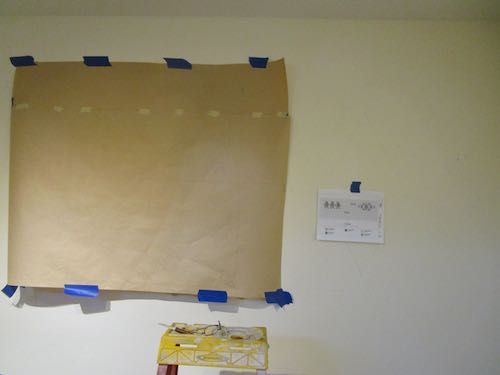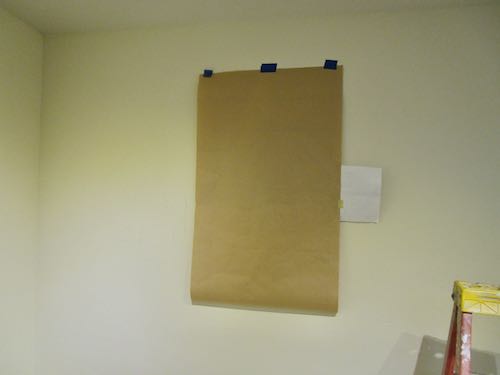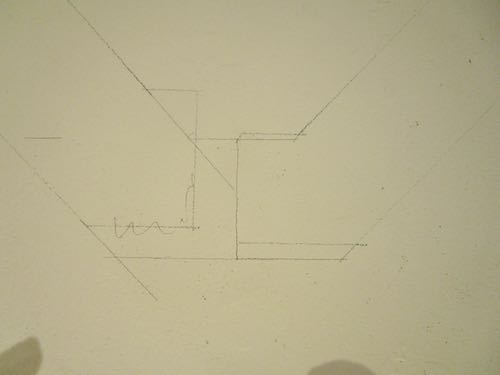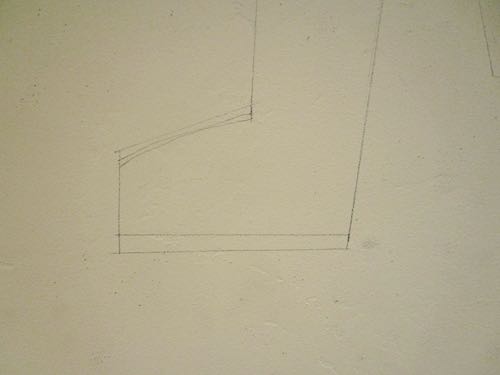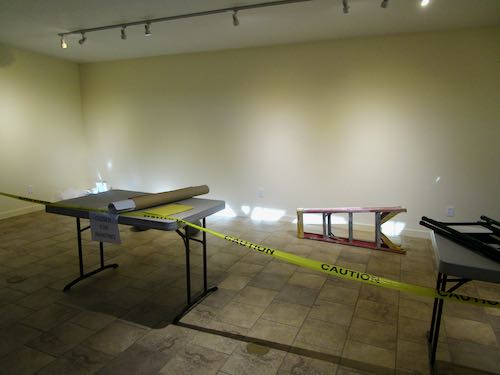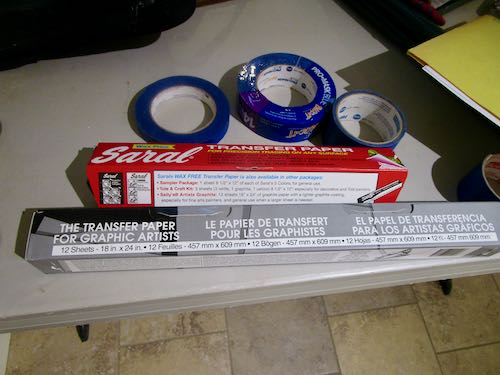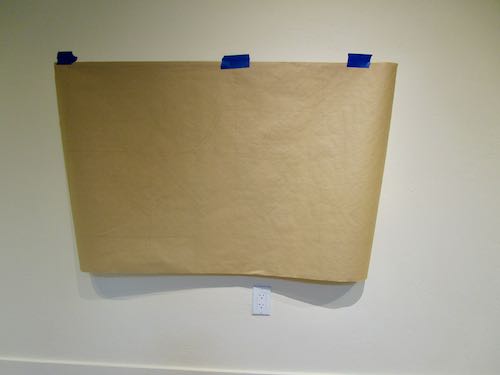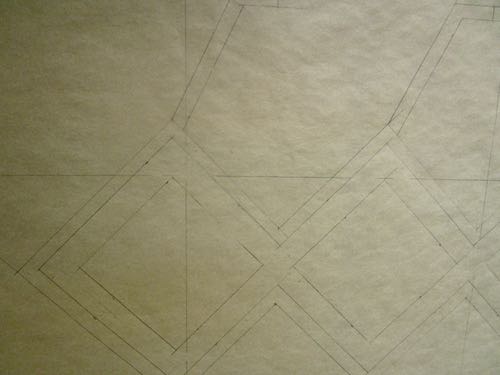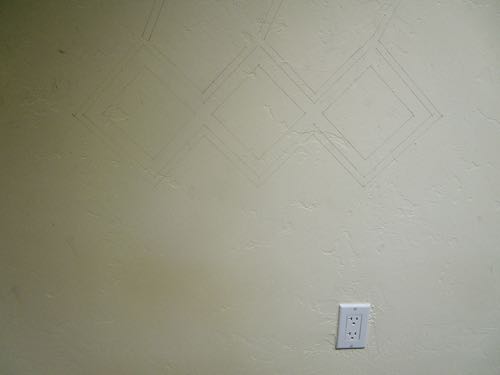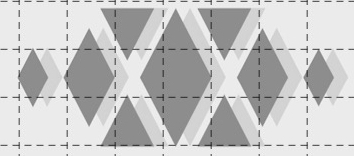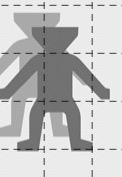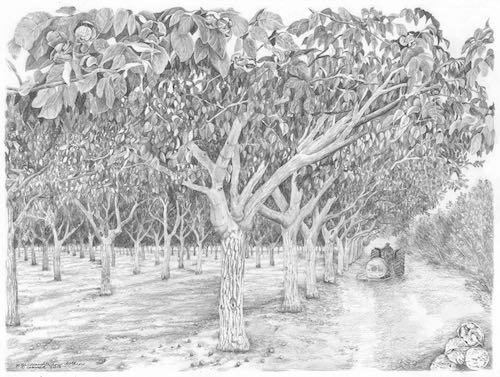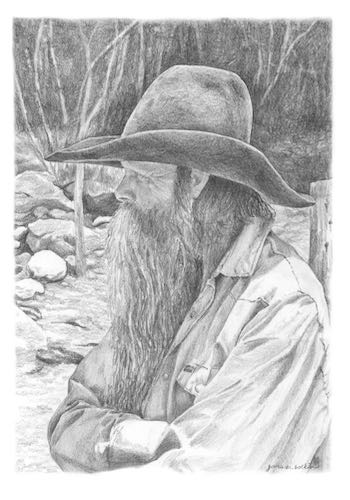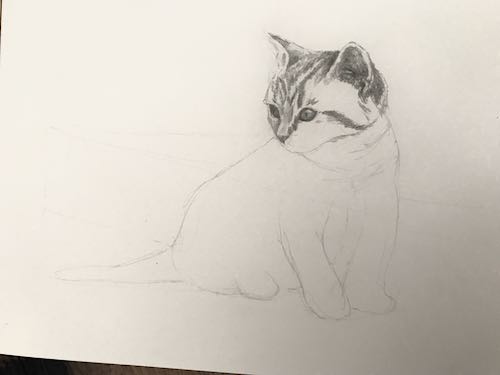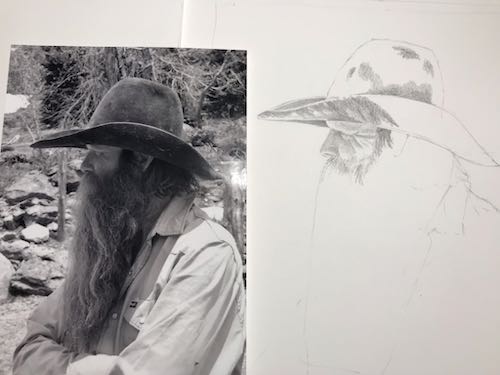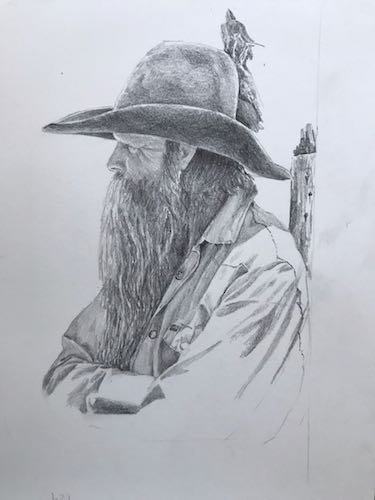Once again, we interrupt our broadcast for this drawing.
Ever notice the annoyance of the English language, where a noun and a verb can be exactly the same word? And I didn’t actually mean “broadcast”, because we are in a series of posts about cabin life. This drawing fits the category of cabin life but it isn’t about cabin life; it’s about pencil drawing.
Get on with it, will ya??
An old friend (that seems to be where most of my work comes from, but new friends and young friends are welcome to commission me; even friends I haven’t met yet are welcome here) expressed an interest in a drawing from The Cabins of Wilsonia.
Alas, it was gone.
We had a few options: 1. Oh well, sorry; 2. Buy another book, Sir, and rip out the page; 3. I can draw it for you again.
My wise friend chose option #3.
Have a look at the original photo that I used.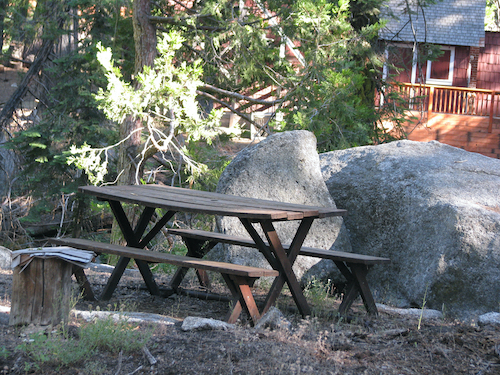
As always, working from a photo isn’t straightforward copying. Every photo has its indiscernible parts, because real life is messy.
Because my friend was wanting the drawing from the book, I used that old drawing to help me make decisions. (I didn’t lie: although the original is gone, it’s still on my laptop.)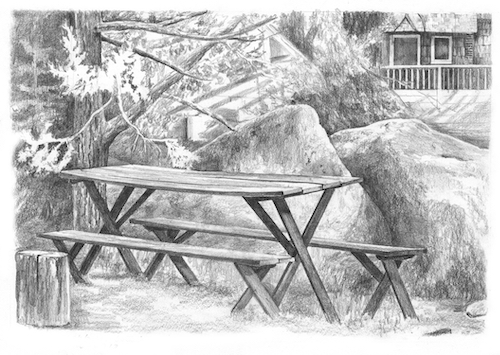
Then, I thought about it a bit more and decided that I ought to be able to do a better job now. That was 10 years ago, and I was cranking out those 272 (was that really the number??) drawings at a rapid pace. This time, there was no deadline. My friend’s only requirement was specific dimensions to go with another drawing, like a matched set.
Here is the other drawing.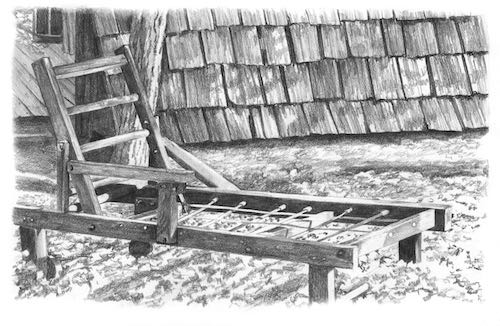
And here is its new partner.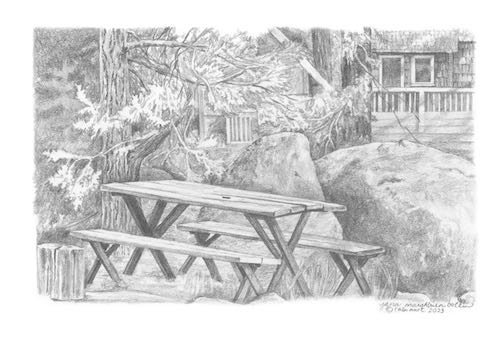
(The difference in darkness has something to do with the computer reproduction, not a change in pencils or pressure on the paper.)
This picnic table appears in the chapter called “Brewer”, which is the name of the road in Wilsonia depicted in that chapter. (I got clever that way.) The funny part is that I could not remember where this photo actually was, and I just put it on Brewer because I thought it looked good with the chaise lounge.
Apparently my friend thought the same. He has actually had a strong influence over my art career, so this makes sense.
Thank you, DB!
